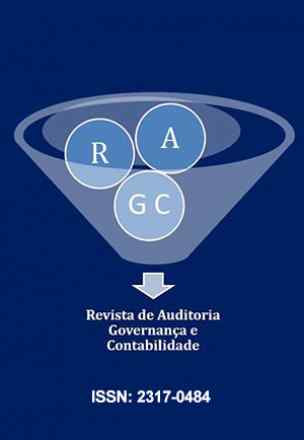ANÁLISE ESPACIAL DA ARRECADAÇÃO DO ISS EM MUNICÍPIOS MINEIROS
Revista de Auditoria, Governança e Contabilidade - RAGC
ANÁLISE ESPACIAL DA ARRECADAÇÃO DO ISS EM MUNICÍPIOS MINEIROS
Autor Correspondente: Fernanda Aparecida Dias da Luz Gomes | [email protected]
Palavras-chave: ISS; Minas Gerais; Análise Explanatória de Dados Espaciais.
Resumos Cadastrados
Resumo Português:
O presente estudo tem como objetivo analisar a distribuição espacial da arrecadação do ISS nos anos de 2013 e 2016 dos municípios mineiros, e identificar o padrão espacial, em função dos seus munícipios vizinhos. Para isso, a variável utilizada foi a arrecadação per capita do ISS e a metodologia empregada é a técnica de Análise Explanatória de Dados Espaciais (AEDE), no qual utilizou o teste I de Moran Global e Local, para verificar a autocorrelação espacial entre os municípios de Minas Gerais e confirmar a existência de clusters espaciais. Os resultados obtidos permitem observar a formação de agrupamentos padronizados clusters do tipo alto-alto e baixo-baixo, ou seja, as técnicas aplicadas permitiram verificar que, em geral, os municípios com alta ou baixa arrecadação são vizinhos de outros municípios que apresentam as mesmas características. Os resultados da análise espacial sinalizam a concentração de cidades com clusters do tipo alto-alto na mesorregião Metropolitana de Belo Horizonte, Triângulo Mineiro e Alto Paranaíba; e com clusters do tipo baixo-baixo tem-se as mesorregiões do Jequitinhonha, Vale do Mucuri, Vale do Rio Doce, Norte de Minas e em parte da Zona da Mata. Além disso, foi verificado que as regiões com clusters baixo-baixo têm menor nível de desenvolvimento, consequentemente, os municípios à sua volta também têm uma baixa, e os com clusters alto-alto se apresentaram mais desenvolvidos e com maior arrecadação de ISS.
Resumo Inglês:
The present study aims to elaborate the spatial analysis of the Service Tax collection in 2013 and 2016 of the municipalities of Minas Gerais, and to identify the spatial pattern, in function of its neighboring municipalities. It used the per capita collection and the Exploratory Spatial Data Analysis (ESDA) technique, which verified Moran’s I and the clusters analysis. The results show the formation of standardized clusters of high-high and low-low clusters, that is, the applied techniques allowed to verify that, in general, the municipalities with high or low collection are neighbors of other municipalities that present the same characteristics. The results of the spatial analysis indicate the concentration of cities with high-high clusters in the metropolitan mesoregion of Belo Horizonte, Triângulo Mineiro and Alto Paranaíba; and with clusters of the low-low type we have the mesoregions of Jequitinhonha, Vale do Mucuri, Vale do Rio Doce, Norte de Minas and part of Zona da Mata. In addition, it was verified that the regions with low-low clusters have a lower level of development, consequently, the municipalities around them also have a drop, and those with high-clusters were more developed and with higher Service Tax collection.

